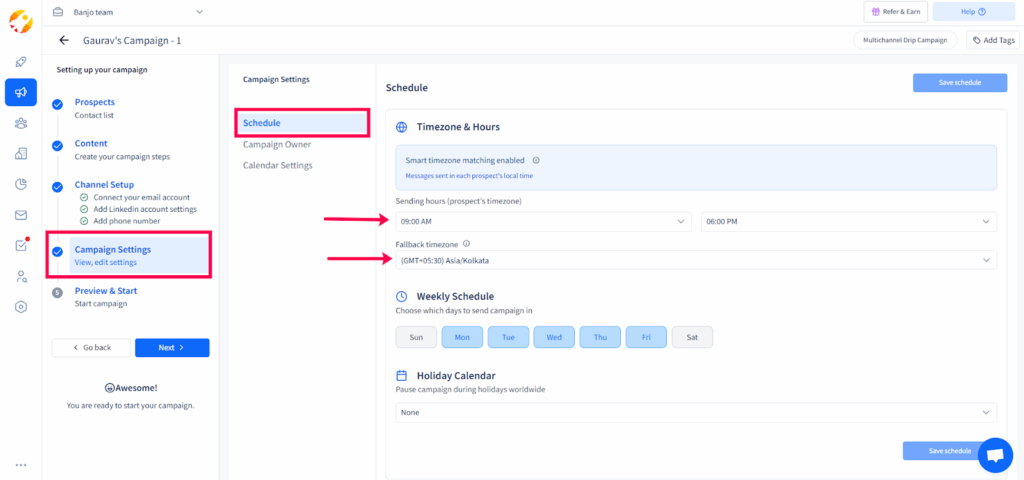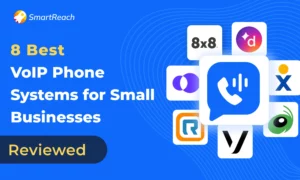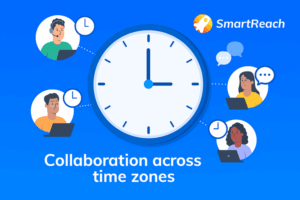How to Find The Right Time of The Day for Cold Emailing?
Sending cold emails at the wrong time is one of the easiest ways to lose replies.
If your email doesn’t land when prospects aren’t checking their inbox, it quickly gets buried.
Analyzing the time-of-day send metrics from your email sending history tool is critical in this case.
When you drill into your email campaign data, you can see exactly when prospects open and reply to your emails.
And even break them down by different time zones and regions you’re targeting in the email campaigns.
Once you know those peak engagement windows, you can adjust your send times for maximum email responses.
In this article, we’ll be breaking down the whole process of how to double down on sending time for optimizing email campaign performance.
What are generally the best times of the day to send emails?
According to our internal research and multiple other sources, these are the best timings for sending cold emails –
| Time of day (local time) | Why it works | Performance insight |
| 6 AM – 9 AM | Emails land at the top of the inbox when recipients start their day | Highest visibility and open rates. |
| 9 AM – 12 PM | Prospects are active and checking messages during work hours. | Strong engagement window. |
| 1 PM – 3 PM | Many professionals check email again after lunch | Good secondary slot for replies. |
| After 5 PM | Engagement is lower as people log off | Least effective for B2B emails. |
Also, the best days to send cold emails for maximum engagement are Monday, Wednesday and Thursday.
You’ll find a more detailed analysis of the best time to send emails information on this blog “When Is the Best Time to Send Your Cold Emails?”
Make sure to check that article out for the full information.
How to find the time-of-day sending metrics for better email campaign performance?
Now let’s do the sending times optimization for the cold email campaigns.
For this example, I will be using SmartReach.io.
SmartReach.io is an AI-powered cold email automation platform that offers the best-in class email deliverability with advanced features for campaign reporting and analysis.
If you are not using SmartReach.io yet for sending email outreach campaigns, sign-up for free on the platform. (Free for 14-days)
Step 1) Aggregate send-time data from email campaigns
First step is looking at how your existing email campaigns perform across different times of day.
Pull reports from your cold email tools to see when emails were delivered.
Compare open, reply, and bounce rates for different email send windows.
Look for consistent performance patterns across multiple campaigns.
Instead of assuming “mornings work best,” you can back decisions with actual engagement data.
Step 2) Identify peak engagement windows by time zone
One of the biggest mistakes in cold email outreach is sending everything at one global time.
Recipients in New York, London, and Singapore don’t check emails at the same time.
In your cold email tool, filter metrics by time zone, making it easy to see:
- When recipients in each region are most active.
- Which hours consistently show higher open rates.
- How engagement shifts between weekdays and weekends.
This data ensures you’re not just sending at “9 AM” globally but you’re sending at 9 AM local time for each prospect.
If you don’t want to run this process manually, here’s a quick hack.
Use the best time to send report inside your SmartReach.io campaign.

*Best time to send report inside SmartReach.io
It helps you identify the best days and time slots of the week when your email campaign received the most number of replies, most number of opens etc.
This is a data driven method to find out the peak engagement windows inside your campaign.
Step 3) Automate email scheduling using SmartReach.io
Once you’ve identified the best times of day and week to send cold emails, the next step is execution.
Doing this manually especially across multiple time zones can be complex and error-prone.
This is why you should use SmartReach.io to schedule email campaigns by time zones.

*Time-zone based email scheduling by SmartReach.io
Here’s how to use this feature exactly:
- Define exact delivery windows: Set clear “from” and “till” times so your emails only go out during the hours you’ve found to be most effective (for example, 9 AM to 12 PM).
- Send by recipient’s local time zone: Instead of sending emails at one global time, SmartReach.io automatically adjusts to each prospect’s local time. If time zone data is missing, a fallback default ensures no message gets left behind.
- Choose which days to send: By default, weekends are disabled, so you don’t risk wasting emails when prospects are least active. You can fine-tune this based on your engagement insights.
This setup bridges the gap between analysis and action.
First, you use campaign reports to spot your peak engagement windows.
Then, you feed those insights into SmartReach.io’s scheduling tool.
The result: your cold emails consistently land at the right time for every prospect, without the hassle of manual planning.
Real-life example of a time-zone-based email campaign
Let’s say you’re running a cold email campaign aimed at SaaS startups in San Francisco.
From your SmartReach.io reports, you notice that reply rates are highest between 8:30 AM and 11:30 AM PST on Tuesdays and Wednesdays.
Here’s how to optimize your email campaign based on the time-zone data-
- Define the delivery window → In SmartReach.io, you set your campaign to send emails only between 8:30 AM and 11:30 AM PST. This ensures your emails land when founders and decision-makers are most active.
- Time zone alignment → Since all prospects are in San Francisco, SmartReach.io schedules everything in Pacific Time. If you expand later to include prospects in London, the system automatically adjusts delivery based on each recipient’s local time zone.
- Automated follow-ups → You create a follow-up sequence in SmartReach.io that triggers two days later, again within the same optimized time window. This keeps your outreach consistent without extra manual effort.
- Personalization at scale → Using SmartReach.io’s AI content editor, you personalize subject lines with each startup’s name or funding round data. This small touch, combined with correct timing, helps your emails stand out in busy inboxes.
- Bounce and deliverability management → As emails are sent, SmartReach.io tracks bounces in real time. The system automatically pauses sending to invalid addresses, protecting your domain reputation and ensuring future emails reach inboxes.
By combining time-of-day metrics, scheduling, personalization, and follow-up automation, your campaign runs smoothly.
On Tuesday morning, founders in San Francisco open their email while checking their inbox.
By Wednesday, your personalized follow-up lands in the same optimized window, resulting in higher engagement and more qualified replies.
Try this workflow in SmartReach.io for FREE (free sign-up link added)
Frequently Asked Questions (FAQ)
Q1. What is the best time to send cold emails for higher response rates?
The best time depends on your audience’s work patterns. Analyze past open and reply rates, then schedule emails in their active business hours using tools like SmartReach.io.
Q2. How does email scheduling improve deliverability?
Scheduling ensures emails reach inboxes when recipients are most active, reducing spam complaints and boosting engagement. Tools like SmartReach.io optimize delivery windows for maximum inbox placement.
Q3. Can I schedule cold emails for different time zones automatically?
Yes. Platforms like SmartReach.io let you schedule based on each recipient’s local time zone, so campaigns reach global audiences at the right moment without manual adjustments.
Q4. Why should follow-up emails be scheduled strategically?
Follow-ups sent too soon or at random times risk being ignored. Strategic scheduling within peak engagement hours ensures higher visibility and improves response chances.
Q5. How do I find the best time-of-day metrics for email outreach?
Track campaign analytics—open rates, clicks, replies—across different times. SmartReach.io reports help identify peak engagement hours so you can schedule future campaigns with precision.
“`json “`


